Premium Only Content
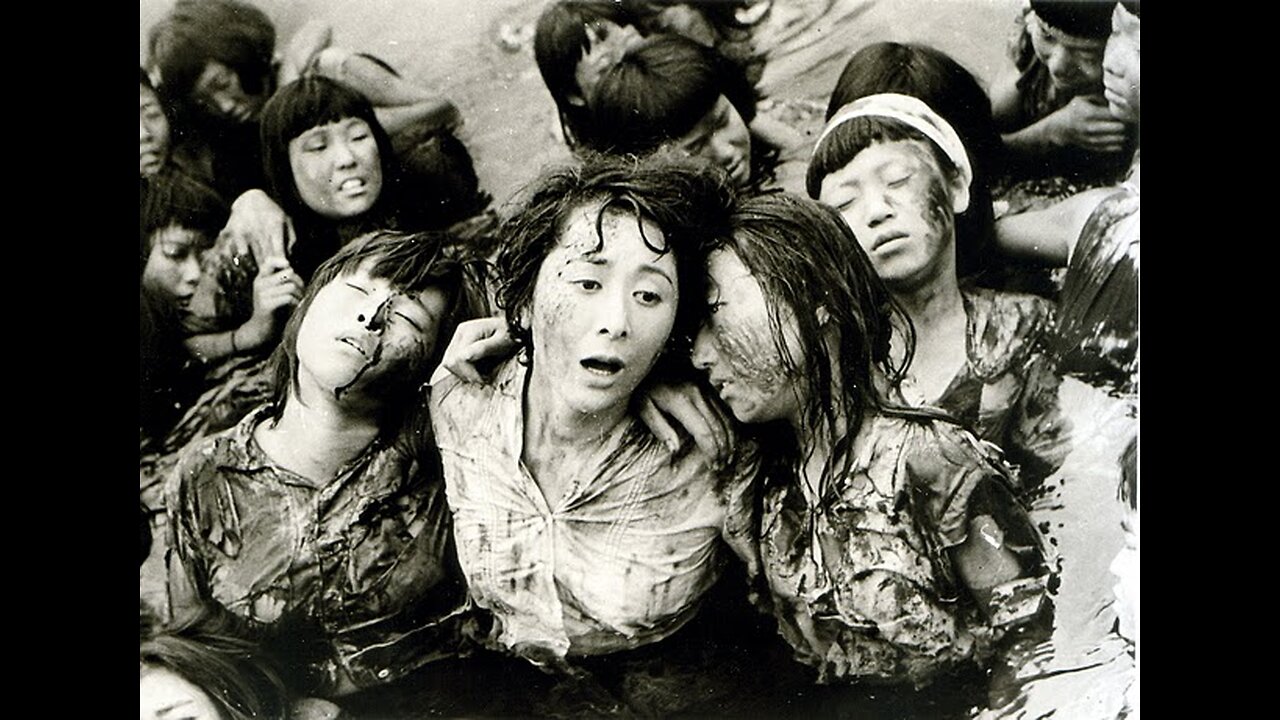
Hiroshima-Nagasaki: A Documentary Suppressed by the U.S. Government
The dark side of history: https://thememoryhole.substack.com/
White Light/Black Rain: The Destruction of Hiroshima and Nagasaki is an HBO documentary film directed and produced by Steven Okazaki. It was released on August 6, 2007, on HBO, marking the 62nd anniversary of the first atomic bombing. The film features interviews with fourteen Japanese survivors and four Americans involved in the 1945 atomic bombings of Hiroshima and Nagasaki.
Interviews
Japanese survivors
Main article: Hibakusha
In preparation for the film, Okazaki met with more than 500 Japanese survivors of the bombings and collected over 100 interviews before settling on the fourteen subjects featured in the film. They were, in order of appearance, including age at the time of the bombings:
Shigeko Sasamori, 13 years old. Sasamori came to the United States in 1955 to undergo reconstructive plastic surgery as part of a group of women called the Hiroshima Maidens.
Keiji Nakazawa, 6 years old. Nakazawa lost most of his family in the bombing and later recounted his story in the Barefoot Gen manga series and the follow-up story, an autobiography, I Saw It.
Yasuyo Tanaka and Chiemi Oka, 9 and 10 years old. Tanaka and Oka were the only survivors among 20 children housed at a Catholic orphanage in Nagasaki.
Sakue Shimohira, 10 years old. Shimohira survived along with her sister, but lost her mother and brother to the bombing. Her sister later committed suicide.
Kyoko Imori, 11 years old. Imori and her friend were the only initial survivors out of 620 students attending a Hiroshima school. Her friend died a week later from radiation poisoning.
Katsuji Yoshida, 13 years old. Yoshida incurred several injuries in the blast, including severe burns disfiguring the right side of his face.
Sunao Tsuboi, 20 years old. At the time of the bombing, Tsuboi majored in science at a Hiroshima University.
Shuntaro Hida, 28 years old. Military doctor who treated Hiroshima survivors after the bombing.
Satoru Fukahori, 11 years old. Orphaned
Pan Yeon Kim, 8 years old. Prior to the bombing her family immigrated to Japan from Korea to escape starvation.
Etsuko Nagano, 16 years old. Nagano lost her brother and sister to the bombing.
Senji Yamaguchi, 14 years old. During his lengthy hospitalization Yamaguchi started a survivors' group to petition the Japanese government to provide medical care to victims of the bombings.
Sumiteru Taniguchi, 16 years old. Taniguchi was a mail carrier and incurred heavy burns during the blast.
American personnel
Okazaki also interviewed four Americans for the film. Morris R. Jeppson, weapons test officer, and Theodore "Dutch" Van Kirk, navigator, were on board the Enola Gay during the bombing missions. Harold Agnew joined them as a scientific observer during the Hiroshima mission. Lawrence Johnston was a scientist at Los Alamos who claims to be the only person to have witnessed the Trinity test as well as the atomic bombings of Hiroshima and Nagasaki.
Recognition
White Light/Black Rain was named by the Academy of Motion Picture Arts and Sciences as one of 15 films considered for nomination as the Best Documentary Feature for the 80th Academy Awards. It was not included among the five nominees.[1] The film was also a nominee for the Motion Picture Producer of the Year Award at the 2008 Producers Guild Awards and the Grand Jury Prize at the 2007 Sundance Film Festival. It did win the 2008 "Exceptional Merit in Nonfiction Filmmaking" Primetime Emmy Award.
See also
Atomic bombings of Hiroshima and Nagasaki
Atomic Bomb Casualty Commission
Hibakusha
Hiroshima Peace Memorial
Hiroshima (BBC documentary)
References
"Nominees and Winners". Academy of Motion Picture Arts and Sciences. 2008-02-27. Archived from the original on 2008-03-27. Retrieved 2008-03-28.
External links
White Light/Black Rain: The Destruction of Hiroshima and Nagasaki at IMDb Edit this at Wikidata
Official Site
vte
Primetime Emmy Award for Exceptional Merit in Documentary Filmmaking
2000s
Death in Gaza (2005) Baghdad ER / Two Days in October (American Experience) (2006) A Lion in the House (Independent Lens) / When the Levees Broke: A Requiem in Four Acts (2007) White Light/Black Rain: The Destruction of Hiroshima and Nagasaki (2008) The Alzheimer's Project: "The Memory Loss Tapes" (2009)
2010s
The Betrayal – Nerakhoon (POV) (2010) Freedom Riders (American Experience) (2011) Have You Heard from Johannesburg? (Independent Lens) (2012) Mea Maxima Culpa: Silence in the House of God (2013) Life According to Sam (2014) Citizenfour (2015) Cartel Land / Jim: The James Foley Story (2016) LA 92 (2017) Strong Island (2018) RBG / The Sentence (2019)
2020s
The Cave (2020) 76 Days (2021) When Claude Got Shot (2022) The Territory (2023)
Categories:
2007 films2007 in the environmentAmerican documentary filmsFilms about Japanese AmericansWorld War II television documentariesDocumentary films about the atomic bombings of Hiroshima and NagasakiTelevision shows about the atomic bombings of Hiroshima and NagasakiFilms directed by Steven OkazakiJapan in non-Japanese culturePrimetime Emmy Award-winning broadcasts2000s English-language films2000s American films
The Atomic Cafe is a 1982 American documentary film directed by Kevin Rafferty, Jayne Loader and Pierce Rafferty.[2][3][4] It is a compilation of clips from newsreels, military training films, and other footage produced in the United States early in the Cold War on the subject of nuclear warfare. Without any narration, the footage is edited and presented in a manner to demonstrate how misinformation and propaganda was used by the U.S. government and popular culture to ease fears about nuclear weapons among the American public.
In 2016, the film was selected for preservation in the United States National Film Registry by the Library of Congress as being "culturally, historically, or aesthetically significant."[5]
Synopsis
The film covers the beginnings of the era of nuclear warfare, created from a broad range of archival material from the 1940s, 1950s and early 1960s including newsreel clips, television news footage, U.S. government-produced films (including military training films), advertisements, television and radio programs.[6] News footage reflected the prevailing understanding of the media and public.[7] The film covers both the impact of the atomic bomb on popular culture and daily life, as well as documents the military's increasing fascination with carrying out more and more dangerous tests. The film opens with footage of the Trinity Test and concludes with a montage of stock footage simulating a nuclear attack on the United States.
Though the topic of atomic holocaust is a grave matter, much of the humor[8] derives from the modern audience's reaction to old training films, such as the Duck and Cover film shown in schools. Another sequence involves footage of US Army training maneuvers in which soldiers are instructed to walk into a mushroom cloud as part of an exercise to study how efficiently the armed forces could kill the survivors of a nuclear bomb strike if Soviet Soldiers ever made it to US soil; prior to the beginning of the exercise, the soldiers are informed, "Viewed from a safe distance, the atomic bomb is one of the most beautiful sights ever seen by man."
Persons shown
The following people are shown in excerpts from speeches, interviews and news reports: Lloyd Bentsen, William H. P. Blandy, Owen Brewster, Frank Gallop, Lyndon Johnson, Maurice Joyce, Nikita Khrushchev, Brien McMahon, Seymour Melman, George Molan, Richard Nixon, Val Peterson, George Portell, George Putnam, Ronald Reagan, Ethel Rosenberg, Julius Rosenberg, Mario Salvadori, Lewis Strauss, Paul Tibbets, Harry S. Truman, James E. Van Zandt.
Historical context
The Atomic Cafe, referred to as a "compilation verite" with no "voice of God narration" or any recently shot footage, was released at the height of nostalgia and cynicism in America. By 1982, Americans lost much of their faith in their government following the Vietnam War and the Watergate scandal the previous decade,[9] alongside the seemingly never-ending arms race with the Soviet Union.[10] The Atomic Cafe reflects and reinforces this idea as it exposes how the atomic bomb's dangers were downplayed and how the government used films to shape public opinion.
The Atomic Cafe was also released during the Reagan administration's civil defense revival.[11] Barry Posen and Stephen Van Evera explain this revival in their article "Defense Policy and the Reagan Administration: Departure from Containment" published in International Security. They argue that in 1981–82 the Reagan administration was moving from an essentially defensive grand strategy of containment to a more offensive strategy. Due to the greater demands of its more offensive strategy "the Reagan Administration ... proposed the biggest military buildup since the Korean War."[12] Of key relevance to The Atomic Cafe, the Reagan move toward offense included the adoption of a more aggressive nuclear strategy that required a large U.S. nuclear buildup. Containment only required that U.S. strategic nuclear forces be capable of one mission: inflicting unacceptable damage on the Soviet Union even after absorbing an all-out Soviet surprise attack. To this "assured destruction" mission the Reagan administration added a second "counterforce" mission, which required the capacity to launch a nuclear first strike against Soviet strategic nuclear forces that would leave the Soviets unable to inflict unacceptable damage on the U.S. in retaliation. The U.S. had always invested in counterforce but the Reagan administration put even greater emphasis on it. The counterforce mission was far more demanding than the assured destruction mission, and required a vast expansion of U.S. nuclear forces to fulfill. Civil defense was a component of a counterforce strategy, as it reduced Soviet retaliatory capacity, hence civil defense was a candidate for more spending under Reagan's counterforce nuclear strategy. Posen and Van Evera argue that this counterforce strategy was a warrant for an open-ended U.S. nuclear buildup.
Bob Mielke, in "Rhetoric and Ideology in the Nuclear Test Documentary" (Film Quarterly) discusses the release of The Atomic Cafe: "This satire feature was released at the height of the nuclear freeze movement (which was in turn responding to the Reagan administration's surreal handling of the arms race.)"[13]
In "Atomic Café" (Film Quarterly), Fred Glass points out that the technical and cultural background needed to create the film was not available in 1955. The film's themes, critical of government propaganda and the nuclear arms race, would have been seen as unpatriotic during the McCarthy era. And getting the necessary permits and funding to make Atomic Café can be quite difficult.[14]
Patricia Aufderheide, in Documentary Film: A Very Short Introduction touches on the significance of The Atomic Cafe as a window into the past of government propaganda and disinformation during the years following the advent of the atomic bomb.
Propaganda, also known as disinformation, public diplomacy, and strategic communication, continues to be an important tool for governments. But stand-alone documentary is no longer an important part of public relations campaigns aimed at the general public.[15]
It has also been known as a postmodernist film.[16][17]
Production
The Atomic Cafe was produced over a five-year period through the collaborative efforts of three directors: Jayne Loader and brothers Kevin and Pierce Rafferty.[18] For this film, the Rafferty brothers and Loader formed a production company called The Archives Project. The filmmakers opted not to use narration.[19] Instead, they deployed carefully constructed sequences of film clips to make their points. Jayne Loader has referred to The Atomic Cafe as "compilation verite": a compilation film with no "Voice of God" narration and no new footage added by the filmmakers.[20] The soundtrack utilizes atomic-themed songs from the Cold War era to underscore the themes of the film.[21]
The film cost $300,000 to make. The group did receive some financial support from outside sources, including the Film Fund, a New York City based non-profit.[22] Grants comprised a nominal amount of the team's budget, and the film was largely funded by the filmmakers themselves. Jayne Loader stated in an interview, "Had we relied on grants, we would have starved."[23] Pierce Rafferty helped to support the team and the film financially by working as a consultant and researcher on several other documentary films including the Oscar-nominated El Salvador: Another Vietnam, the Oscar-nominated With Babies and Banners, and The Life and Times of Rosie the Riveter (which also was inducted into the National Film Registry).[24] The Rafferty brothers had also received an inheritance that they used to support the team during the five years it took to make the film.[23] About 75% of the film is made up of government materials that were in the public domain. Though they could use those public domain materials for free, they had to make copies of the films at their own expense. This along with the newsreel and commercial stock footage that comprises the other 25% of the film (along with the music royalties) represents the bulk of the trio's expenditures.[24]
Release
The film was released on March 17, 1982, in New York, New York. In August 1982, a tie-in companion book of the same name, written by Kevin Rafferty, Jayne Loader and Pierce Rafferty was released by Bantam Books. A 4K digital restoration of the film, created by IndieCollect,[25] premiered at SXSW in 2018.[4]
Home media
The 20th Anniversary Edition of the film was released in DVD format in Region 1 on March 26, 2002, by Docudrama.[26] A 4K restored version[27][28] was released on Blu-ray on December 4, 2018, by Kino Lorber.[29][30]
In 1995, Jayne Loader's Public Shelter, an educational CD-ROM and website – with clips from The Atomic Cafe, plus additional material from declassified films, audio, photographs, and text files that archive the history, technology, and culture of the Atomic Age – was released by EJL Productions, a company formed by Jayne Loader and her first husband, Eric Schwaab. Though it garnered positive national reviews and awards, the self-distributed Public Shelter CD-ROM sold only 500 copies and failed to find a national publisher.[31] Loader and Schwaab divorced.[32] The website folded in 1999.
Reception and legacy
Critical response
When The Atomic Cafe was released, film critic Roger Ebert discussed the style and methods the filmmakers used, writing, "The makers of The Atomic Cafe sifted through thousands of feet of Army films, newsreels, government propaganda films and old television broadcasts to come up with the material in their film, which is presented without any narration, as a record of some of the ways in which the bomb entered American folklore. There are songs, speeches by politicians, and frightening documentary footage of guinea-pig American troops shielding themselves from an atomic blast and then exposing themselves to radiation neither they nor their officers understood."[33] He also reviewed it with Gene Siskel who saw it more as a piece of Americana and a curio.[34]
Critic Vincent Canby of the New York Times praised the film, calling the film "a devastating collage-film that examines official and unofficial United States attitudes toward the atomic age" and a film that "deserves national attention."[21] Canby was so taken by The Atomic Cafe that he mentioned it in a subsequent article – comparing it, favorably, to the 1981 blockbuster Porky's.[35]
Critic Glenn Erickson discussed the editorial message of the film's producers:
The makers of The Atomic Cafe clearly have a message to get across, and to achieve that goal they use the inherent absurdity of their source material in creative ways. But they're careful to make sure they leave them essentially untransformed. When we see Nixon and J. Edgar Hoover posing with a strip of microfilm, we know we're watching a newsreel. The content isn't cheated. Except in wrapup montages, narration from one source isn't used over another. When raw footage is available, candid moments are seen of speechmakers (including President Truman) when they don't know the cameras are rolling. Caught laughing incongruously before a solemn report on an atom threat, Truman comes off as callously flip ...[36]
On Rotten Tomatoes the film has an approval rating of 93% based on reviews from 29 critics.[37]
Deirdre Boyle, an Associate Professor and Academic Coordinator of the Graduate Certificate in Documentary Media Studies at The New School and an author of Subject to Change: Guerrilla Television Revisited, claimed that "By compiling propaganda or fictions denying 'nuclear-truth', The Atomic Cafe reveals the American public's lack of resistance to the fear generated by the government propaganda films and the misinformation they generated. Whether Americans of the time lacked the ability to resist or reject this misinformation about the atomic bomb is a debatable truth."[38]
The Oxford Handbook of Science Fiction said it was, in quotes, a "mockumentary" from its editing and called it, "The most powerful satire of the official treatments of the atomic age".[39]
Influences
In 2016, The Atomic Cafe was one of the 25 films selected for preservation in the annual United States' National Film Registry of the Library of Congress for being deemed "culturally, historically, or aesthetically significant". The press release for the Registry stated that "The influential film compilation 'Atomic Cafe' provocatively documents the post-World War II threat of nuclear war as depicted in a wide assortment of archival footage from the period ..."[5][40]
Controversial documentary filmmaker Michael Moore was inspired by the film that he tweeted: "This is the movie that told me that a documentary about a deadly serious subject could be very funny. Then I asked the people who made it to teach me how to do it. They did. That movie became my first – 'Roger & Me'."[41]
Accolades
Wins
Boston Society of Film Critics: BSFC Award, Best Documentary; 1983.[42]
Nomination
British Academy Film Awards: Flaherty Documentary Award, Kevin Rafferty, Jayne Loader and Pierce Rafferty; 1983.[43][44]
Soundtrack
Atomic Cafe: Radioactive Rock 'n Roll, Blues, Country & Gospel
Soundtrack album
Released 1982
Genre Soundtrack, rock and roll, blues, country, gospel
Length 53:22
Label Rounder Records
Producer Charles Wolfe, The Archives Project (Jayne Loader, Kevin Rafferty and Pierce Rafferty)
Professional ratingsReview scores
Source Rating
AllMusic [45]
Atomic Cafe: Radioactive Rock 'n Roll, Blues, Country & Gospel is the soundtrack to the 1982 film The Atomic Cafe. A vinyl LP record was released in 1982 by Rounder Records. Some of the credits for the record include: co-produced by Charles Wolfe, The Archives Project (Jayne Loader, Kevin Rafferty and Pierce Rafferty), album cover artwork by Dennis Pohl, cover design by Mel Green, and booklet text by Charles Wolfe.[46]
Track listing
Side One No. Title Author(s) Date of recording Length
1 "Atom and Evil" Golden Gate Quartet November 1946 3:25
2 Audio clip Major Thomas Ferebee, Enola Gay bombardier August 15, 1945 0:29 3:32
"When the Atom Bomb Fell" Karl Davis and Harty Taylor December 4, 1945 3:03
3 Audio clip President Harry S. Truman August 9, 1945 0:29 3:42
Audio clip Captain Kermit Beahan, The Great Artiste bombardier August 15, 1945 0:12
"Win the War Blues" Sonny Boy Williamson I[a] December 14, 1944 3:01
4 Audio clip David E. Lilienthal, the first Chairman of the United States Atomic Energy Commission October 28, 1946 0:22 3:14
"Atomic Power" Buchanan Brothers c. June 1946 2:52
5 Audio clip Winston Churchill March 31, 1949 0:25 3:51
Audio clip[b] News reporter September 23, 1949 0:12
"Jesus Hits Like an Atom Bomb" Lowell Blanchard and The Valley Trio[c] c. April 1950 3:14
6 Audio clip Rep. James E. Van Zandt (Republican), Penn. May 8, 1953 0:47 3:40
"When They Drop the Atomic Bomb" Jackie Doll and his Pickled Peppers c. March 1951 2:53
7 "Atomic Sermon" Billy Hughes and the Rhythm Buckaroos c. 1953 3:05
8 "Old Man Atom" Sons of the Pioneers c. 1947 3:43
Total length: 28:12
Side Two No. Title Author(s) Date of recording Length
1 "Uranium" The Commodores[d] c. 1957 2:28
2 "50 Megatons" Sonny Russell c. 1956 2:26
3 "Atom Bomb Baby" The Five Stars[e] c. 1957 2:28
4 "Satellite Baby" Skip Stanley November 1957 2:55
5 "Sputniks and Mutniks" Ray Anderson and the Homefolks c. 1958 2:25
6 "Atomic Cocktail" Slim Gaillard Quartette[f] December 15, 1945 2:52
7 "Atomic Love" Little Caesar with The Red Callender Sextette c. 1957 3:22
8 "Atomic Telephone" Spirit of Memphis Quartet[g] c. June 1951 3:04
9 "Red's Dream" Louisiana Red[h] 1962 3:10
Total length: 25:10
Featured in the film but not the soundtrack were "13 Women" by Bill Haley and His Comets,[47] Glenn Miller's version of "Flying Home",[48] a couple of themes from Miklos Rozsa, Arthur Fiedler's take on Franz Liszt's Hungarian Rhapsody No. 2[49] and Charles Mackerras's interpretation of "The Old Castle" from Pictures at an Exhibition.[50]
See also
Atomic Age
Bruce Conner – experimental collage filmmaker that inspired the filmmakers similar in content
Emile de Antonio – documentary filmmaker (which also inspired the co-directors) known for Point of Order, a 1964 study on Joseph McCarthy and the Army–McCarthy hearings
Culture during the Cold War
Duck and cover
How to Photograph an Atomic Bomb
List of films about nuclear issues
Nuclear weapons in popular culture
Dr. Strangelove – the 1964 Kubrick classic to which critics compared The Atomic Cafe.
Reefer Madness – the 1936 cult classic to which critics also compared it.
Fallout – the video game series featuring Atomic Age aesthetics
United States in the 1950s
References
"14. The 1980s and American Documentary". Contemporary American Cinema. McGraw-Hill Education. May 16, 2006. p. 291. ISBN 9780335228430. Retrieved 24 February 2023.
McLane Betsy "Film Quarterly", film review, Spring 1983. Last accessed: November 27, 2012.
Canby, Vincent (17 March 1982). "DOCUMENTARY ON VIEWS ABOUT ATOM BOMB". The New York Times. Retrieved 24 February 2023.
Epstein, Sonia (March 30, 2018). "False Truths: The Atomic Cafe Seen Today". Sloan Science & Film. Retrieved May 5, 2018.
"With "20,000 Leagues," the National Film Registry Reaches 700". Library of Congress. Retrieved 2020-05-18.
"Film Forum · THE ATOMIC CAFE". Filmforum.org. Retrieved 24 February 2023.
"THE ATOMIC CAFE: Ducking, Covering, and the American Cultural FALLOUT - Brows Held High". Retrieved 24 February 2023 – via YouTube.
Schindel, Dan (7 August 2018). "The Comic Absurdity of the Atomic Threat". Hyperallergic.com. Retrieved 24 February 2023.
"Atomic Cafe". Popmatters.com. 15 January 2009. Retrieved 24 February 2023.
McLane Betsy. "Film Quarterly", film review, Spring 1983. Last accessed: November 27, 2012.
Conelrad: All Things Atomic. The Atomic Cafe, Jayne Loader Interview. Last accessed: November 26, 2012.
Posen, R. Barry "Defense Policy and the Reagan Administration: Departure from Containment", Journal article. Last accessed: November 27, 2012.
Mielke Bob. "Film Quarterly", film review, Spring 2005. Last Accessed: November 27, 2012.
Glass, Fred (Spring 1983). "ATOMIC CAFE". Film Quarterly. 36 (3): 51–54. doi:10.2307/3697350. JSTOR 3697350. ProQuest 853155453.
Aufderheide, Patricia (November 2007). Documentary Film: A Very Short Introduction (7th ed.). Oxford University Press. ISBN 978-0195182705.
Connie Field's 'The Life and Times of Rosie the Riveter'|International Documentary Association
Rick Prelinger: We have always recycled|BFI
Herman, Robin (1982-05-16). "THEY TURNED OLD MOVIES INTO A TIMELY FILM ABOUT NUCLEAR WAR". The New York Times. ISSN 0362-4331. Retrieved 2015-11-23.
Olubunmi, Oloruntoba John (16 March 2008). "The Atomic Cafe – Senses of Cinema". Senseofcinema.com. Retrieved 24 February 2023.
Conelrad: All Things Atomic. The Atomic Cafe, Jayne Loader Interview. Last accessed: February 20, 2011.
Canby, Vincent (17 March 1982). "DOCUMENTARY ON VIEWS ABOUT ATOM BOMB (Published 1982)". The New York Times.
Trebbe, Ann L. "Cinema Verties." The Washington Post 6 Nov. 1981, C3 sec.
"CONELRAD: THE ATOMIC CAFE | Jayne Loader Interview [Fall 2002, Winter 2005]". Conelrad.com. Retrieved 24 February 2023.
Harrington, Richard. "Blast from the Past: 'Atomic Cafe': A Stunning Cold War Collage." The Washington Post 14 May 1982, C1 sec.
"The Atomic Cafe". Kinonow.com. Retrieved 24 February 2023.
Amazon.com
"The Atomic Cafe (1982) – Re-Release Trailer(1)". Vimeo.com. 28 July 2018. Retrieved 24 February 2023 – via Vimeo.
"Bethesda presents THE ATOMIC CAFE". Vimeo.com. 19 September 2018. Retrieved 24 February 2023 – via Vimeo.
"Kino: 4K Restoration of The Atomic Cafe Detailed for Blu-ray". Blu-ray.com. Retrieved 24 February 2023.
"The Atomic Cafe Blu-ray". Blu-ray.com. Retrieved 24 February 2023.
Wen, Howard. Dallas Observer, "GROUND ZERO: Atomic Cafe filmmaker Jayne Loader has won raves for her CD-ROM Public Shelter, but calls the 'new medium' a dud," June 27, 1996. Last accessed: February 20, 2011.
"WEDDINGS; Jayne Loader, Robert Kirshner". The New York Times. 1999-12-12. ISSN 0362-4331. Retrieved 2015-11-23.
Ebert, Roger (January 1, 1982). "The Atomic Cafe movie review & film summary (1982)". Chicago Sun-Times.
"The Thing, The Atomic Café, The Weavers: Wasn't That a Time!, Megaforce, E.T. the Extra-Terrestrial, 1982 – Siskel and Ebert Movie Reviews". Siskelebert.org. Retrieved 24 February 2023.
Canby, Vincent (1982-04-25). "FILM VIEW; PONDERING REAL CONCERNS OF THE 1950'S". The New York Times. ISSN 0362-4331. Retrieved 2015-11-23.
"DVD Savant Review: The Atomic Cafe, 20th Anniversary Edition". Dvdtalk.com. Retrieved 24 February 2023.
"The Atomic Cafe (1982)". Rotten Tomatoes. Retrieved 2020-11-01.
Boyle, Deirdre, "The Atomic Cafe", Cineaste 12.2, 1982, p. 39.
Latham, Rob (2014-09-01). The Oxford Handbook of Science Fiction. Oxford University Press. ISBN 9780199838851.
"Complete National Film Registry Listing". Library of Congress. Retrieved 2020-05-18.
@MMFlint (May 29, 2018). "This is the movie that told me that a documentary about a deadly serious subject could be very funny. Then I asked…" (Tweet) – via Twitter.
"Boston Society of Film Critics Awards (1983)". IMDb.com. Retrieved 24 February 2023.
"In 1982, the hilarious documentary "The Atomic Café" reminded us that the threat of nuclear war was no joke-Night Flight". Nightflight.com. Archived from the original on 26 October 2020. Retrieved 24 February 2023.
"The Atomic Cafe (1982) - Movie". Moviefone.com. Retrieved 24 February 2023.
"Original Soundtrack - Atomic Cafe Album Reviews, Songs & More". AllMusic. Retrieved 25 February 2023.
Conelrad web site, Atomic Cafe: History Done Right. Last accessed: February 20, 2011.
"Thirteen Women (And Only One Man In Town)". Retrieved 24 February 2023 – via YouTube.
"Flying Home (Remastered 2001)". Retrieved 24 February 2023 – via YouTube.
"Hungarian Rhapsody No. 2". Retrieved 24 February 2023 – via YouTube.
"Pictures at an Exhibition". Retrieved 24 February 2023 – via YouTube.
Notes
Blind John Davis played piano, Ted Summitt played guitar, and Armand "Jump" Jackson played drums.
This audio clip is in the soundtrack, but not officially listed.
Red Rector may have played the mandolin solo.
Not to be confused with the soul music group Commodores.
Ronnie Russell was the main singer, Jim Bruhn played the instrumentation.
Zutty Singleton played the drums, Dodo Marmarosa played the piano, Tiny Brown played bass, and Gaillard played the guitar. Brown and Gaillard did the vocals.
Robert Reed, tenor, and Earl Malone, bass, sung. Jet Bledsoe and Sila Steele are lead singers.
Carl Lynch played bass, Panama Francis played the drums.
External links
"The Atomic Cafe", an essay by John Mills on the National Film Registry site
The Atomic Cafe at the American Film Institute Catalog
The Atomic Cafe at IMDb Edit this at Wikidata
The Atomic Cafe at AllMovie
The Atomic Cafe at Rotten Tomatoes
Interview with filmmaker Jayne Loader about The Atomic Cafe
Homepage
The Atomic Cafe officially posted by Kino Lorber on YouTube
vte
Boston Society of Film Critics Award for Best Documentary Film
1980–2000
Charleen or How Long Has This Been Going On? (1980) Diaries (1981) The Atomic Cafe (1982) Say Amen, Somebody (1983) The Times of Harvey Milk (1984) Shoah (1985) Mother Teresa (1986) Marlene (1987) The Thin Blue Line (1988) Let's Get Lost (1989) No Award (1990) Paris Is Burning (1991) No Award (1992) Visions of Light (1993) Hoop Dreams (1994) Crumb (1995) Anne Frank Remembered (1996) Fast, Cheap & Out of Control (1997) The Big One (1998) Hands on a Hardbody: The Documentary (1999) The Eyes of Tammy Faye (2000)
2001–present
The Gleaners and I (2001) The Kid Stays in the Picture (2002) Capturing the Friedmans (2003) Control Room (2004) Murderball (2005) Deliver Us from Evil / Shut Up & Sing (2006) Crazy Love (2007) Man on Wire (2008) The Cove (2009) Marwencol (2010) Project Nim (2011) How to Survive a Plague (2012) The Act of Killing (2013) Citizenfour (2014) Amy (2015) O.J.: Made in America (2016) Dawson City: Frozen Time (2017) Won't You Be My Neighbor? (2018) Honeyland (2019) Collective (2020) Summer of Soul (2021) All the Beauty and the Bloodshed (2022) Geographies of Solitude (2023)
Authority control databases: National Edit this at Wikidata
United States
Categories:
1982 films1982 documentary filmsAmerican documentary filmsCold War filmsCollage filmDocumentary films about nuclear war and weapons1982 independent filmsAmerican independent filmsNuclear warfareCompilation filmsUnited States National Film Registry films1980s English-language films1980s American filmsPostmodern filmsDocumentary films about the atomic bombings of Hiroshima and Nagasaki1980s satirical filmsEnglish-language documentary films
-
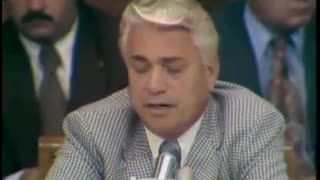 6:37:17
6:37:17
The Memory Hole
6 months agoNixon Impeachment Hearings Day 6 (1974-07-29)
1.04K -
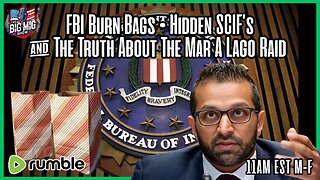 LIVE
LIVE
The Big Mig™
3 hours agoFBI Burn Bags, Hidden SCIF’s & Truth About Mar-A-Lago Raid
5,186 watching -
 1:50:11
1:50:11
Dear America
3 hours agoFBI Discovers THOUSANDS Russia Hoax Docs In “Burn Bags”!! + Pelosi EXPOSED For Insider Trading!!
85.3K75 -
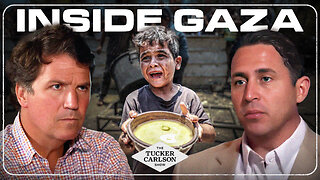 1:27:12
1:27:12
Tucker Carlson
2 hours agoTony Aguilar Details the War Crimes He’s Witnessing in Gaza
45.6K96 -
 LIVE
LIVE
Badlands Media
5 hours agoBadlands Daily: July 31, 2025
4,235 watching -
 2:16:31
2:16:31
Matt Kohrs
12 hours agoHUGE Earnings Beat, Inflation Data & New Record Highs || Live Trading Options & Futures
13.5K2 -
 19:44
19:44
Bearing
3 hours agoWorld’s CRAZIEST Feminist Wants AMERICANS to WAKE THE F*** UP 🦅💥
6.26K33 -
 47:09
47:09
Randi Hipper
1 hour agoUNITED STATES BITCOIN RESERVE IS COMING! WHITE HOUSE CRYPTO REPORT EXPLAINED
5.51K -
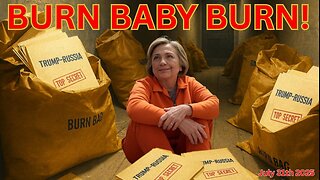 LIVE
LIVE
Wendy Bell Radio
7 hours agoBurn Baby Burn
7,552 watching -
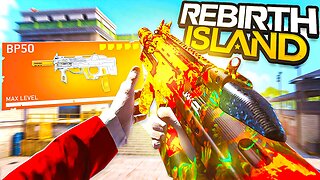 LIVE
LIVE
JuicyJohns
3 hours ago $1.15 earned🟢#1 REBIRTH PLAYER 10.2+ KD🟢$500 GIVEAWAY SATURDAY!
98 watching